Contestants from noughties weight loss show The Biggest Loser have opened up about some of the extreme measures they took to shed the pounds.
The hit series, which ran for 18 seasons on NBC and USA, saw obese or overweight people from across the US dropping upwards of 100 or even 200 pounds over a matter of months.
Now Netflix has released a new three-part documentary about the programme, featuring people who appeared on the Biggest Loser, as well as producers, the show’s doctor, and trainer Bob Harper (although the other coach – Jillian Michaels – declined to take part).
The show ran from 2004 to 2016 airing on NBC, before it was cancelled. It was then rebooted on the USA Network in 2020, before being cancelled after just one season. In its heyday, the programme went global, with versions appearing in countries around the world, earnings hundreds of millions of dollars. The branding was licensed for products including cookbooks, DVDs, and weight-loss camps.
When its NBC run was cancelled in 2016, it came after controversy, with critics arguing that it prioritised a number on the scale rather than contestants’ overall health and well-being.
Netflix’s new docuseries, titled Fit for TV: The Reality of the Biggest Loser, ‘takes a look behind-the-scenes, exploring its cultural relevance and complicated legacy’ – and as part of that, previous contestants spoke on camera about some of the dangerous habits they practised in a bid to lose the most weight, and scoop the $250,000 prize.
Those practices included fasting for 10 days, and surviving on minimal calories while undergoing intense exercise regimes among others.
According to Netflix: ‘On their weight loss journeys, contestants were separated into teams and created workout and nutrition plans with trainers.
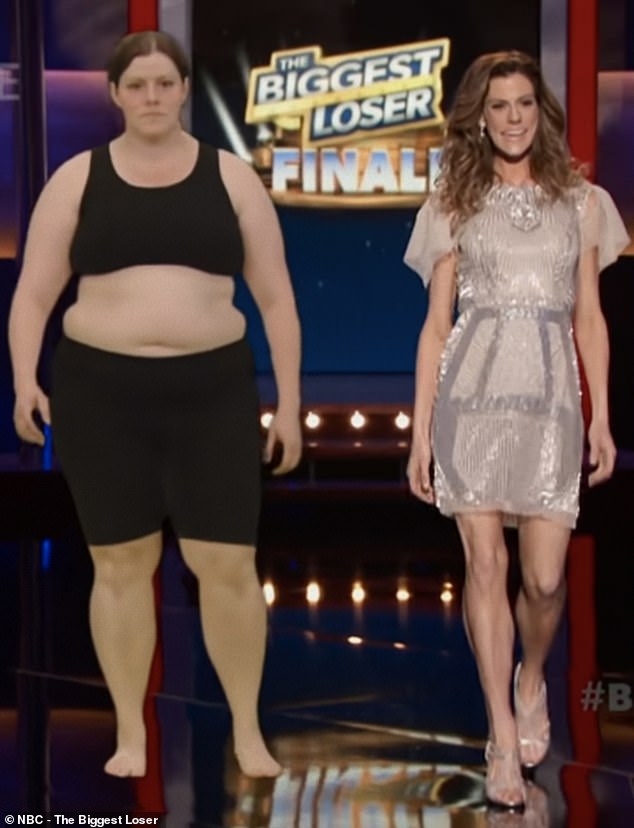
One of The Biggest Loser’s controversies came in 2014, when season 15 winner Rachel Frederickson showed off her very slim frame, prompting trainer Jillian Michaels to look visibly shocked and mouth ‘Oh my God’
‘The teams would compete in various challenges for prizes – like physical competitions or willpower tests – such as “temptations,” in which contestants were tempted by high calorie food or drinks.’
The contestant who lost the highest percentage relative to their starting weight won the series.
Season one winner, Ryan Benson, admitted that he was doing ‘super dangerous things’, in the run-up to the final. Speaking about his experience on the show, he said: ‘This was the first reality show where people make a physical change. That weight that we were losing was real. You can’t fake that.’
He added that as they got closer to the final, he ‘lost all focus about getting healthy, and the focus became winning’ – and he added that he sometimes feels he has ‘PTSD’ from taking part in the programme.
‘The final episode was a live episode,’ Ryan said. ‘We are here live in Hollywood. They were doing it in the same studio where they filmed American Idol. During the final weigh in, i’s just so nerve wracking.’
He continued: ‘It worked out great, because I won, but I was doing what most doctors would say were super unhealthy things.
‘The last 10 days, I didn’t put any food in my body. I was doing the master cleanse – drinking lemon juice and maple syrup and cayenne pepper – all these tricks that are super unhealthy, just to cut weight.
‘At the final weigh in, we had to do a urine test. They said, “Ryan, there’s blood in your urine, which obviously means you’re so dehydrated”.’

Trainer Jillian Michaels (who did not appear in the Netflix docuseries) is pictured during season nine with contestant Drea
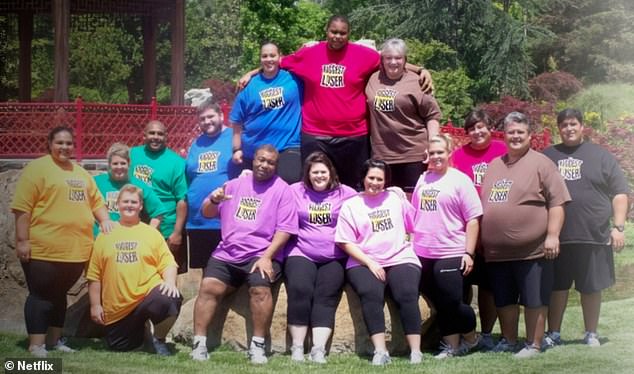
Extreme weight loss show The Biggest Loser ran from 2004 until 2016, before it was rebooted for a single season in 2020
He noted that the ‘one thing’ he ‘really remembers’ from the final is Jillian congratulating him on his win.
‘She gives me a big hug, and she says, Ryan, you just made me a millionaire,’ he revealed.
This was far from the only concerning experience reported by previous contestants: two who appeared in the docuseries spoke about the staggering amount of calories they burned daily while on the ‘ranch’ – the secluded location where participants stayed during filming.
Joelle Gwynn, who appeared in season seven of The Biggest Loser in 2009, said: ‘The first week, we needed to burn a minimum of 6,000 calories a day.’
Meanwhile Danny Cahill, who won the $250,000 prize for season eight after losing 239 pounds in just over six months, discussed his restrictive plan.
He achieved staggering weight loss in the first week, dropping 24lb. This continued into week two, where he lost 12lb. In the third week, he lost four pounds – still well over the one to pounds that is considered healthy – but this was hugely disappointing to Danny.
‘That was when I said, “woah, maybe I need to do something different here”,’ he recounted.
‘And I started lowering my calories at that point. I was eating 800 calories and burning 6,000 to 8,000 a day. When I lowered the calories, I lost more. I got on the scale, and I lost 15lb that week. As it went on, I was like, “I need to stay here”.
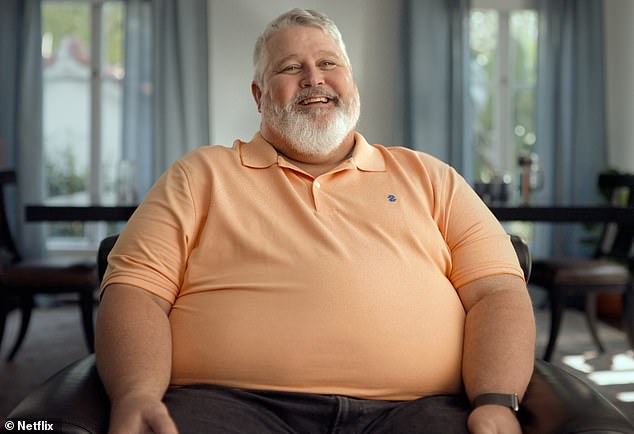
Danny Cahill (pictured in the docuseries) who won season eight of The Biggest Loser, revealed that at one point, he was consuming just 800 calories a day – while burning up to 8,000
He added: ‘There is a push and pull on The Biggest Loser between losing the weight, the health aspect of it, the money, the prize. All this works in contrast to each other.
‘My calorie count was lower than I think it should have been. Sometimes you’re tempted to do things that you maybe shouldn’t do.’
Danny has regained the weight since appearing on the programme, and says that being the champion, then returning to his previous size was difficult.
‘The shame you feel is a heavy weight to bear,’ he admitted.
Another controversy tackled in the docuseries was around claims that contestants were given drugs.
In 2016, the New York Post reported that ex ‘Losers’ were allegedly given illicit medication to help them lose weight, quoting Joelle Gwynn.
A source from the show told the Post the series was ‘corrupt’, and claimed that fitness trainer Bob Harper and his assistant were giving contestants ADHD medication Adderall (a stimulant).
However Bob strongly denied – and continues to deny – the allegations. He responded at the time with a statement saying ‘safety is paramount in my training regimen’.

THEN: Trainer Bob Harper is pictured during season seven of The Biggest Loser, which aired in 2009
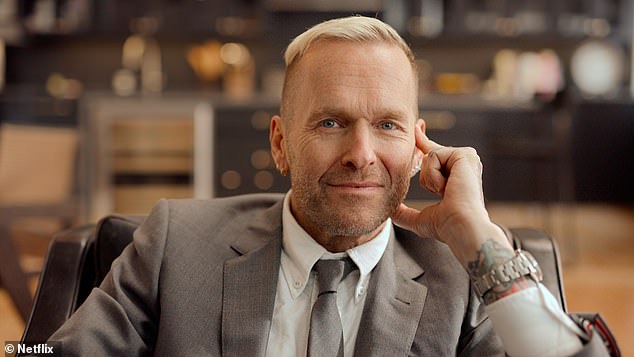
NOW: Bob Harper (pictured while appearing in Fit for TV: The Reality of the Biggest Loser) said in the docuseries that producers said they wanted to see the contestants ‘puke’
Speaking to the Daily Mail, he said: ‘These allegations are absolutely false and are in direct conflict with my lifelong devotion to health and fitness.
‘Safety is paramount in my training regimen and, while demanding, my approach has always focused on the overall well-being of contestants as they lose significant weight and educate themselves, for the first time, on living a healthy lifestyle.’
In the docuseries, Joelle said that her quotes had been taken out of context.
The Biggest Loser’s MD, Dr Robert Huizenga, sued both Joelle and the NYP over the allegations that he went along with giving contestants illicit weight-loss drugs, but in 2019, a US District court found she had not defamed him.
However, the documentary noted that the article in question was removed from the NY Post’s website, and Dr Huizenga – alongside Bob Harper – vigorously deny the claims.
No one associated with the show has ever faced any criminal charges for distributing the illegal substances the NY Post alleged.
What did emerge is that during the 15th season, trainer Jillian Michaels had given her team caffeine supplements, something the production publicly acknowledged was a violation of its own rules.
It should be noted that Dr Huizenga was vocally opposed to giving the contestants caffeine – and in fact banned it.
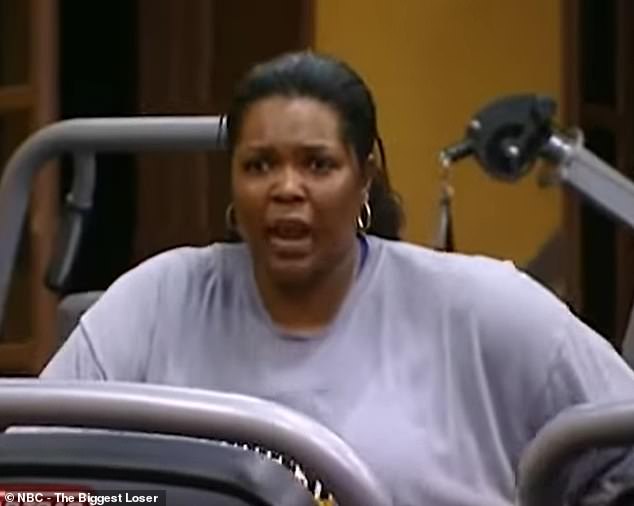
Joelle Gwynn, who appeared in season seven of The Biggest Loser in 2009 (pictured) said the contestants were burning 6,000 calories a day during the first week of the show

Joelle said that quotes she made that were cited in a New York Post article about The Biggest Loser were taken out of context
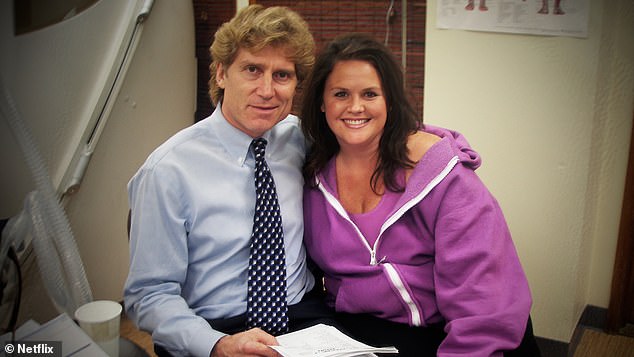
The Biggest Loser’s physician, Dr Robert Huizenga is pictured with season eight contestant Tracey Yukich
Even in the absence of illicit substances, the extreme workouts themselves caused suffering to some of the contestants, with multiple scenes showing people collapsing – with one even vomiting – while pushing themselves.
According to trainer Bob Harper, the producers felt that the intense workouts made good television, he reported them saying to him: ‘We want them to puke, we want the madness of it all.’
The most serious incident took place during season eight of The Biggest Loser, when contestant Tracey Yukich – who revealed she had taken part in the show because of infidelity in her marriage, which she blamed on her weight – was taken to hospital with a life-threatening condition after one of the challenges, which involved running on the beach.
In order to qualify for the programme, participants had to complete the one-mile run. During the exercise, Tracey collapsed, becoming unresponsive.
Speaking about it in the docuseries, she said: ‘I knew I had died that day […] my organs were literally shutting down […] no one really realised how sick I was.’
She was airlifted to hospital in a helicopter, where she was diagnosed with rhabdomyolysis, a condition where damaged muscle tissue breaks down into the bloodstream. While she did recover, and returned to the show, Dr Huizenga banned her from joining the workouts temporarily.
That season’s winner Danny also reflected on the incident in the docuseries, saying: ‘We were all scared to death; it was horrific.’
Another major controversy came in 2014, when Rachel Frederickson – who did not appear in the Netflix documentary – won season 15. Rachel, who weighed 260 pounds (18.5 stone, 117.9 kg) at the beginning of the series, weighed in at just 105 pounds (7.5 stone, 47.6 kg). Her BMI was reportedly just 18.
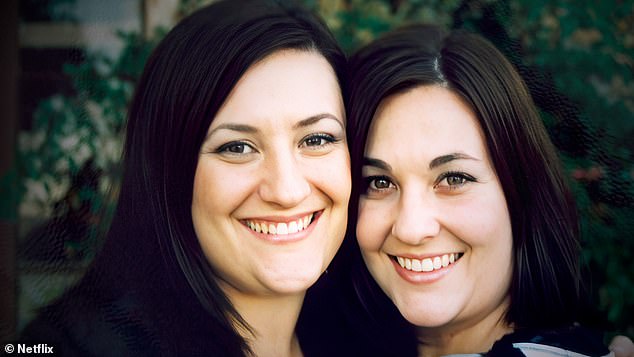
Sisters Olivia Ward and Hannah Curlee, who scooped first and second place in season 11, have maintained their weight loss
![The sisters said during the docuseries that taking part in The Biggest Loser was 'the best thing [they] ever did'](https://www.americanpolibeat.com/wp-content/uploads/2025/08/1755271901_60_The-Biggest-Losers-biggest-scandals-Contestants-on-noughties-weight-loss.jpg)
The sisters said during the docuseries that taking part in The Biggest Loser was ‘the best thing [they] ever did’
The enormous weight loss, and her tiny frame (described by one journalist as ’emaciated’) caused concern amongst viewers. When the camera panned to Jillian Michaels, she looked visibly shocked at Rachel’s diminutive stature, and could be seen mouthing the words: ‘Oh my God.’
Writing about the response to her weight loss a year later, Rachel admitted that the comments on her size had been upsetting. She also revealed that she had gained around 20lbs (a stone and a half) since wrapping the programme.
She added: ‘When I stood on stage at the live finale, I had never felt stronger. I had accomplished everything I wanted to do. I was extremely proud of myself.’
Rachel has maintained a low profile since the show ended, keeping her social media private, and not appearing in the docuseries.
While many of the former contestants had negative feelings about the show (season two’s Suzanne Mendonca said being on The Biggest Loser was the ‘biggest mistake of [her] life’, some did feel positive.
Sisters Olivia Ward and Hannah Curlee, who scooped first and second place respectively in season 11, have managed to maintain their weight loss in the over 10 years since their series aired.
Speaking in the documentary, they both agreed that taking part in The Biggest Loser was ‘the best thing [they] ever did’.
Fit for TV: The Reality of the Biggest Loser is available to stream on Netflix in the UK now.











